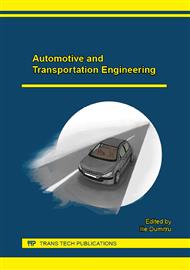p.443
p.455
p.461
p.472
p.480
p.491
p.497
p.503
p.512
Reconstruction of an Unusual Road Traffic Accident Using Two Different Versions of a Simulation Program
Abstract:
In most of the cases of a road traffic accident reconstruction, the usage of traditional reconstruction methods represents the basic set of tools, but in an ever increasing number of cases, computer simulation is used for control the results or vice versa. In some cases, traditional methods, based on linear momentum conservation, energy conservation and assessment of deformation of the vehicles or experimental results of crash tests are not suitable because of the highly unusual character of the collision. The paper deals with one case of this type in which the pedestrian was cut in two parts.
Info:
Periodical:
Pages:
503-511
Citation:
Online since:
January 2016
Authors:
Price:
Сopyright:
© 2016 Trans Tech Publications Ltd. All Rights Reserved
Share:
Citation:


